As the second-largest city in Japan with a population of over 2.7 million people, Osaka is a major economic and cultural hub in the country. Its skyline is made up of towering skyscrapers, neon lights, and mega shopping malls. Often referred to as “Japan’s Kitchen”, Osaka’s unique blend of mouthwatering street food and distinctive local charm sets it apart from its counterparts, Tokyo and Kyoto. You will need at least two to three days in your Osaka itinerary just to sample all of its specialties.
If this is the last stop on your Japan itinerary, you will soon see the differences between Osaka and other cities. Traveling the 15 minutes by Shinkansen from Kyoto to Osaka feels like jumping ahead in time to a modern world where they have taken the phrase “go big or go home” to heart. You will find construction cranes eagerly building new skyscrapers, malls bedecked with Ferris wheels and rooftop gardens, and restaurants with facades that serve as three-dimensional billboards with giant crabs, octopus, or sushi on full display.
In Osaka, you will also find people who are more laid back than those in other cities. They are rebels who aren’t afraid to bend the rules, like (gasp) jaywalking or crossing on a don’t walk sign. The people are more direct, slightly louder, and have their own customs — like standing on the right side of an escalator instead of the left as you do in most of the country.
Osaka is a modern city but parts of it are also retro, quirky, and cool. A visit to Japan would be incomplete without spending at least three days in Osaka. In this 3 day Osaka itinerary, I’ll break out how to get there, how to get around, where to stay, and a day-by-day guide to the most popular attractions.
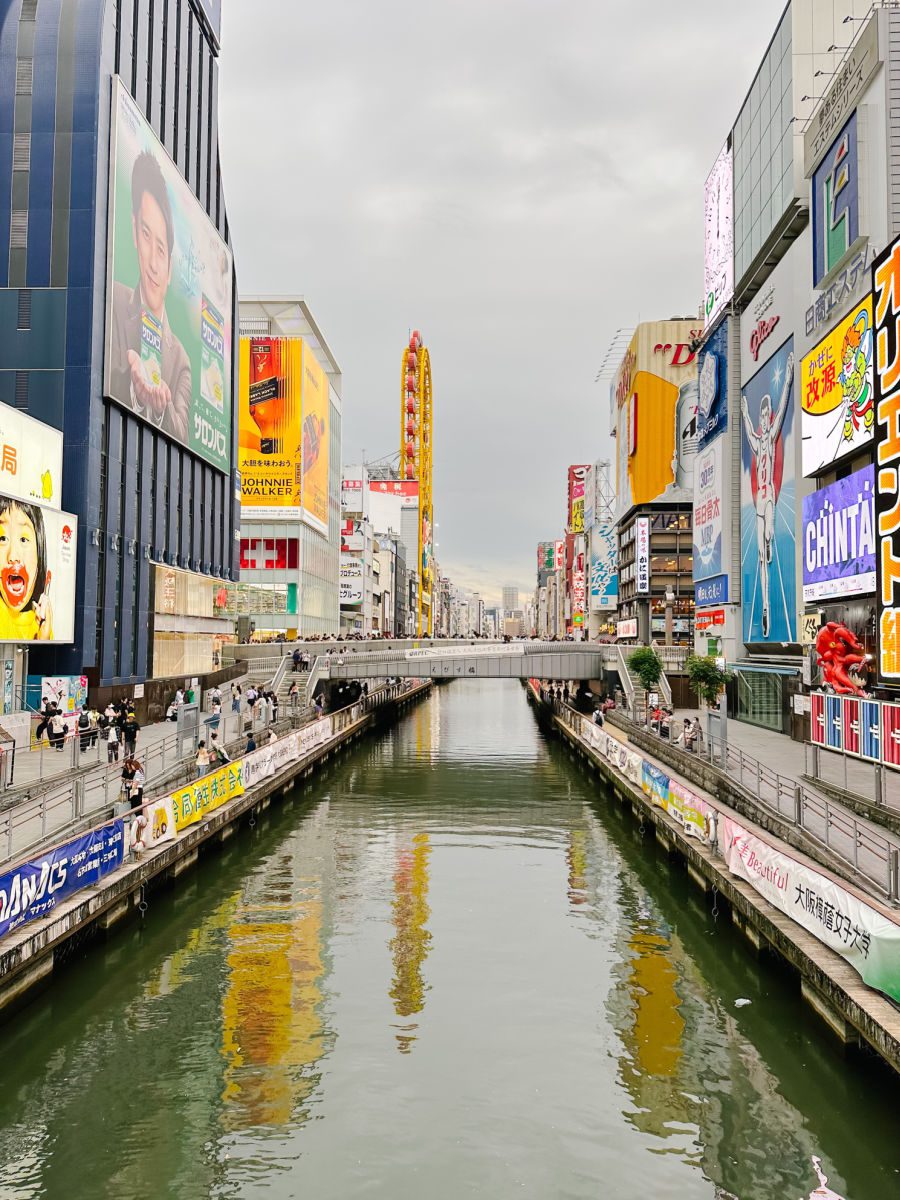
3 Day Osaka Itinerary: Day 1
Note: This post may contain affiliate links. If you click a link and make a purchase, I may receive a small commission. All opinions are my own.
When you arrive in Osaka, if you are staying in the Umeda area near Osaka Station, head over to the Umeda Sky Building for a walk around the rooftop outdoor observatory.
Umeda Sky Building
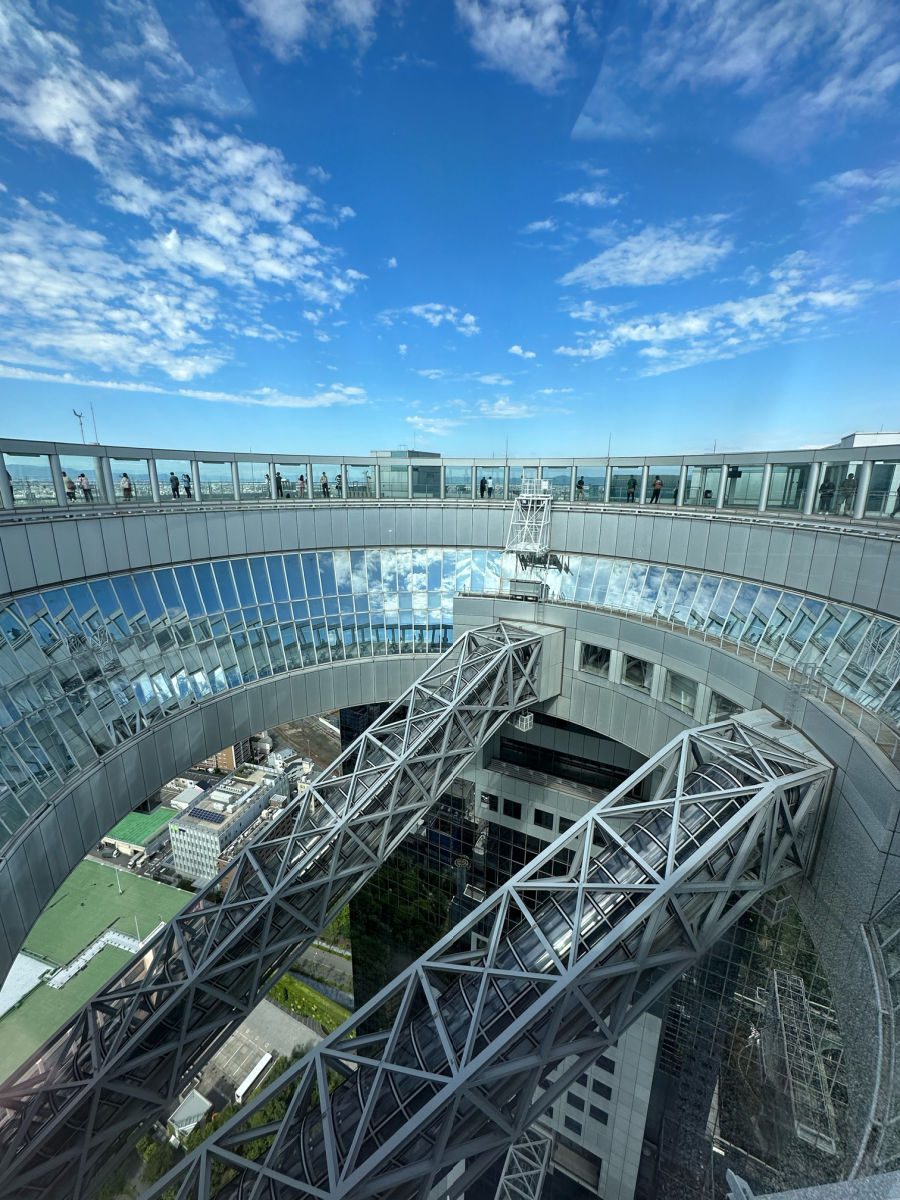
One feature that makes this observation deck different from others is the glass-enclosed escalators that you take between the two towers from the 39th floor where the ticket office is located to the 40th floor and the entrance to the observation deck. These escalators give the appearance of being suspended in air, which can either be a thrill or a fright, depending on how well you do with heights.
The 360-degree observation deck lets you take in the city from all angles and get an up-close view of the continued growth of this metropolis.
After taking in the view, head down to the B1 Floor in the basement of the Umeda Sky Building, which is designed to resemble a small city street from the Edo Period, lined with a variety of restaurants. This is a good spot for lunch, or you could try one of the many restaurants in the Grand Front Osaka shopping mall, which is adjacent to the train station.
Shopping
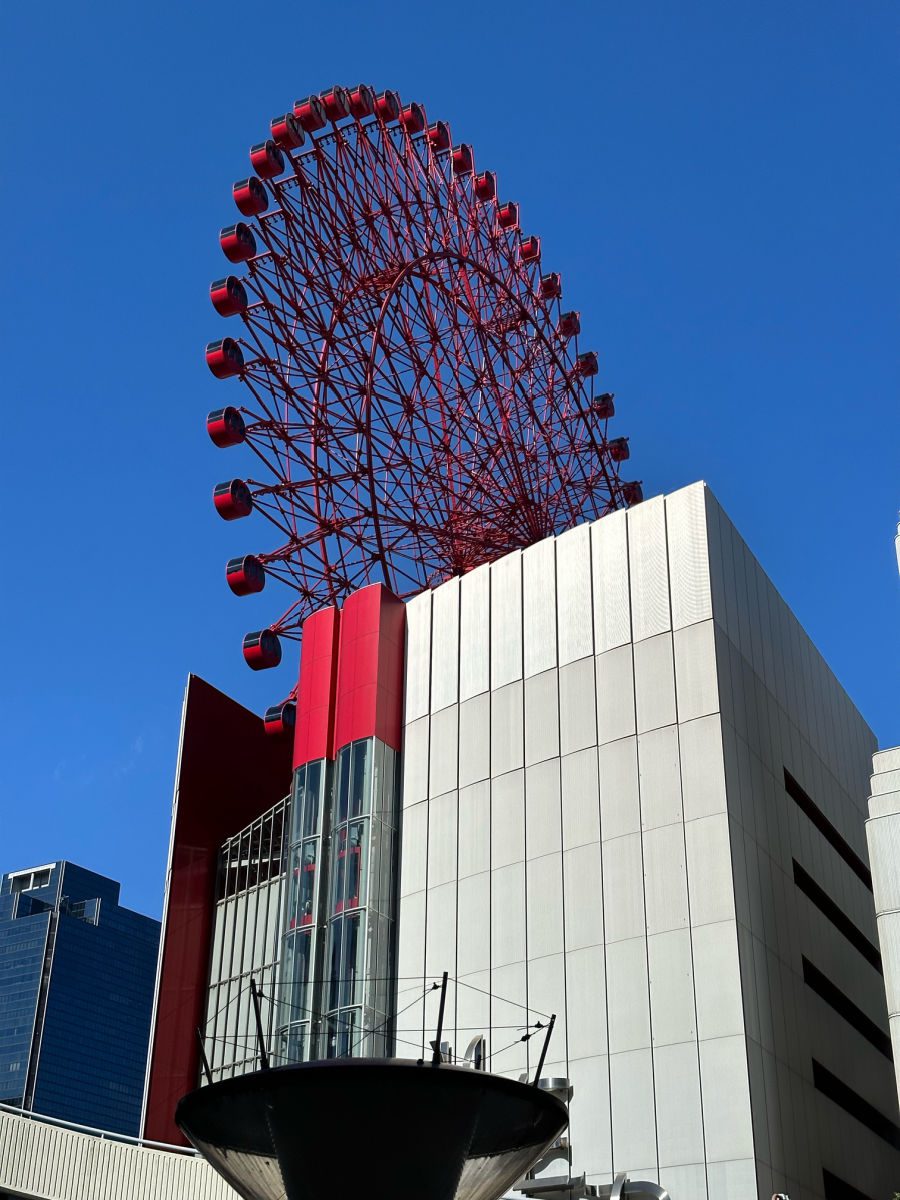
Osaka is a great city to do a little shopping and take advantage of finding unique fashions that you won’t find in the stores at home. For high-end shopping, the Grand Front Osaka has some familiar names and Hankyu Sanban Gai is another option. However, teens will love the affordable youthful fashions at the HEP Five shopping center. You will find floor after floor of trendy styles and even find a giant Ferris wheel (something you see frequently in Osaka.)
While these are both adjacent to the Osaka Train Station and within a few minutes walk of the Umeda Sky Building, another option is to take the metro to the Namba Parks shopping mall, which features a multi-floor rooftop garden with cafe, restaurants, and lush green spaces.
Osaka Castle
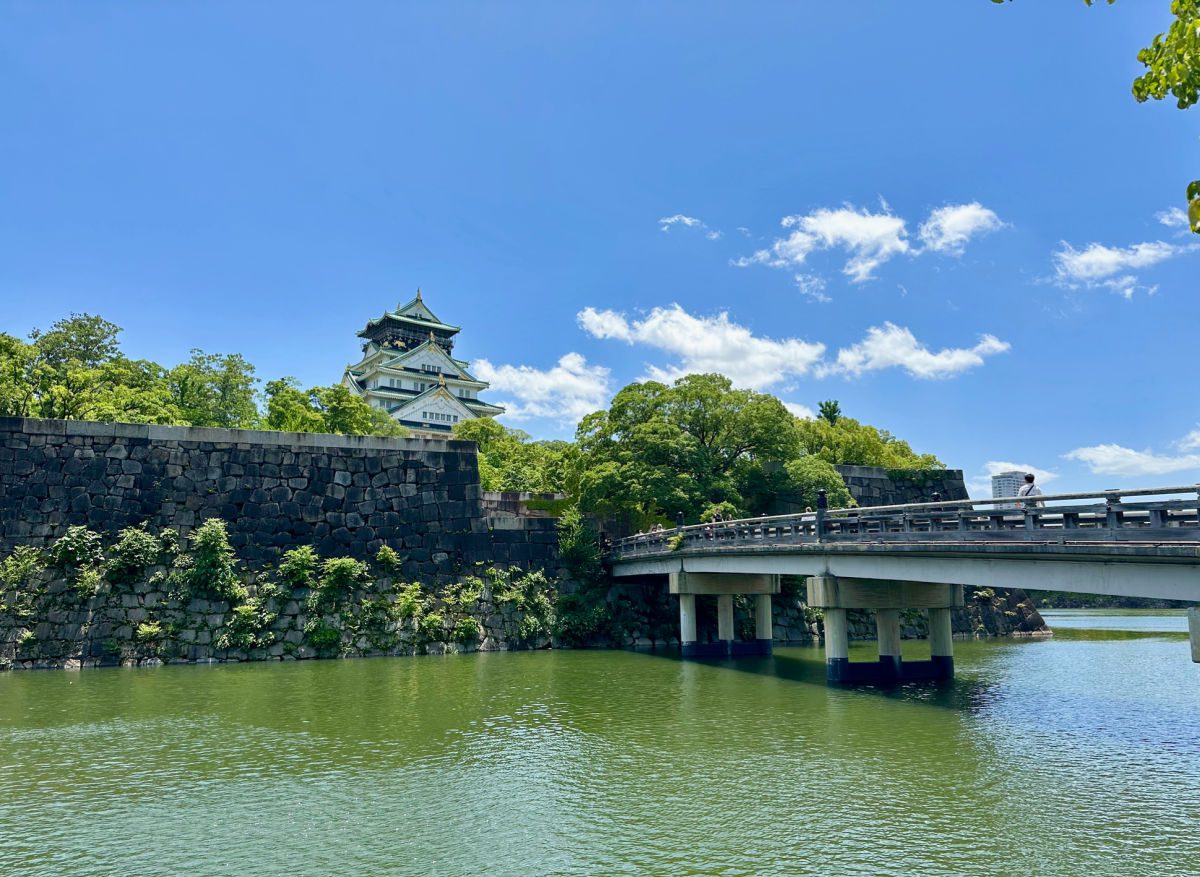
Finish your sightseeing today with a visit to the Osaka Castle and surrounding gardens, one of the most iconic sites in Osaka (and a must for any of the fans of Shogun on Hulu!). Built in the late 16th century, the castle serves as a symbol of power and prestige, harking back to the tumultuous feudal era. Originally constructed by Toyotomi Hideyoshi, a renowned samurai warrior, and statesman, the castle played a crucial role in unifying Japan during that time.
The impressive five-story exterior is a perfect photo backdrop to memorialize your stay in Osaka. If you would like to enter the castle, it pays to purchase tickets online to skip the long ticket lines. Inside is the castle’s museum, which houses a diverse collection of artifacts, including armor, weapons, and historical documents. You can also climb to the top of the main tower for panoramic views of Osaka’s skyline and the surrounding parkland.
The castle’s grounds, encompassing vast gardens and moats, are a popular spot for cherry blossom viewing during the spring season. You can also take a boat ride along the moat or visit the Castle gardens. To avoid crowds, consider visiting the castle earlier in the day or during weekdays to avoid the larger crowds that tend to gather in the afternoons and on weekends.
ORIX Buffaloes Baseball Game
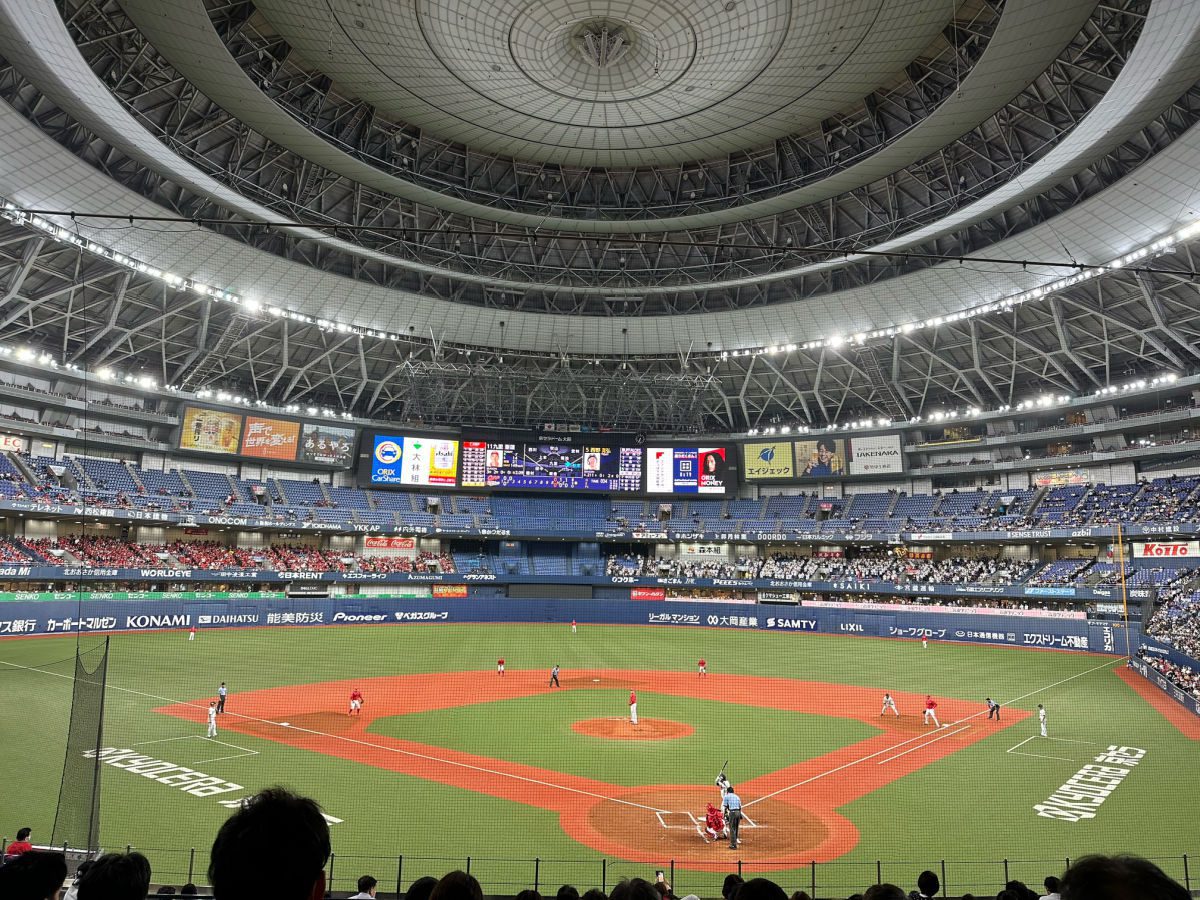
If you are a baseball fan and visiting during the baseball season, I would suggest getting tickets to see a game at the Kyocera Dome. Buying tickets can get a little complicated, as you need to first register and set up an account. However, there are also third-party services that will purchase your tickets for you and deliver them to your hotel.
When we were in town, we were fortunate to get to see the Osaka ORIX Buffaloes play the Hiroshima Carp, which is quite a rivalry. We had excellent seats behind home plate, which came with access to an all-you-can-eat buffet. It was very interesting to see how the stadium was split with Carps fans on the visitor side and ORIX Buffalo fans behind the home team dugout.
The whole game had the energetic feel of a college game, as both teams had bands and large cheering sections that brought the noise for the entire game. We had a blast cheering for the home team and getting to see how the Japanese have adopted such a love for baseball.
Osaka Itinerary: Day 2
Plan to dedicate a whole day in Osaka to exploring the city’s rich street food culture. We took a food tour of the Shinsekai district with Arigato Food Tours that we loved! Arigato also offers food tours of the Dotonbori area, but I felt like that was easy enough to explore on our own.
Shinsekai
Shinsekai is a very interesting neighborhood that is worth exploring. At one point, it was farmland for green onions, and you will still find scallions present on many dishes in Osaka. After World War II, the government wanted to create a Western-style entertainment district to attract international visitors so they created Shinsekai, meaning “New World.”
This vibrant neighborhood was developed to mimic the cities of Paris and New York (Coney Island in particular.) It is known for its retro charm and unique atmosphere. Anywhere else I would have thought it was cheesy and too kitschy, but for some reason, it works and the mix of over-the-top restaurant facades, carnival-like games, boardwalk-like gaming parlors, and souvenir shops are actually pretty charming in a bizarre, retro way.
The primary landmark of Shinsekai is the Tsutenkaku Tower, standing tall and offering stunning views of the surrounding area. Originally built in 1912 and standing at a height of 103 meters, the Tsutenkaku Tower blends both Western and Eastern architectural elements, with a resemblance to the Eiffel Tower. Today, you can go to the top of the observation deck and even take a slide down the side of the tower.
One of the most famous foods from this area is kushikatsu, a dish consisting of skewers that are coated in panko and deep-fried, containing beef, vegetables, and other ingredients. You will find the original location of Kushikatsu Daruma, the ubiquitous “Angry Chef” that you will find throughout Osaka, in Shinsekai.
Another must-try food in Osaka is takoyaki, one of the city’s most famous culinary creations. The dish consists of small balls made from a batter of wheat flour, eggs, and dashi (a Japanese soup stock), filled with diced octopus, green onions, and other ingredients. Takoyaki is cooked in special round molds on a hot griddle and then topped with savory sauces, mayonnaise, and bonito flakes. They feature a crispy exterior and soft, gooey interior.
You will not leave an Arigato Food Tour hungry! In addition to filling up on delicious food, we learned so much about this area and the local culture (plus found an excellent shop to purchase Japanese knives!) that we wouldn’t have discovered on our own.
Dotonbori
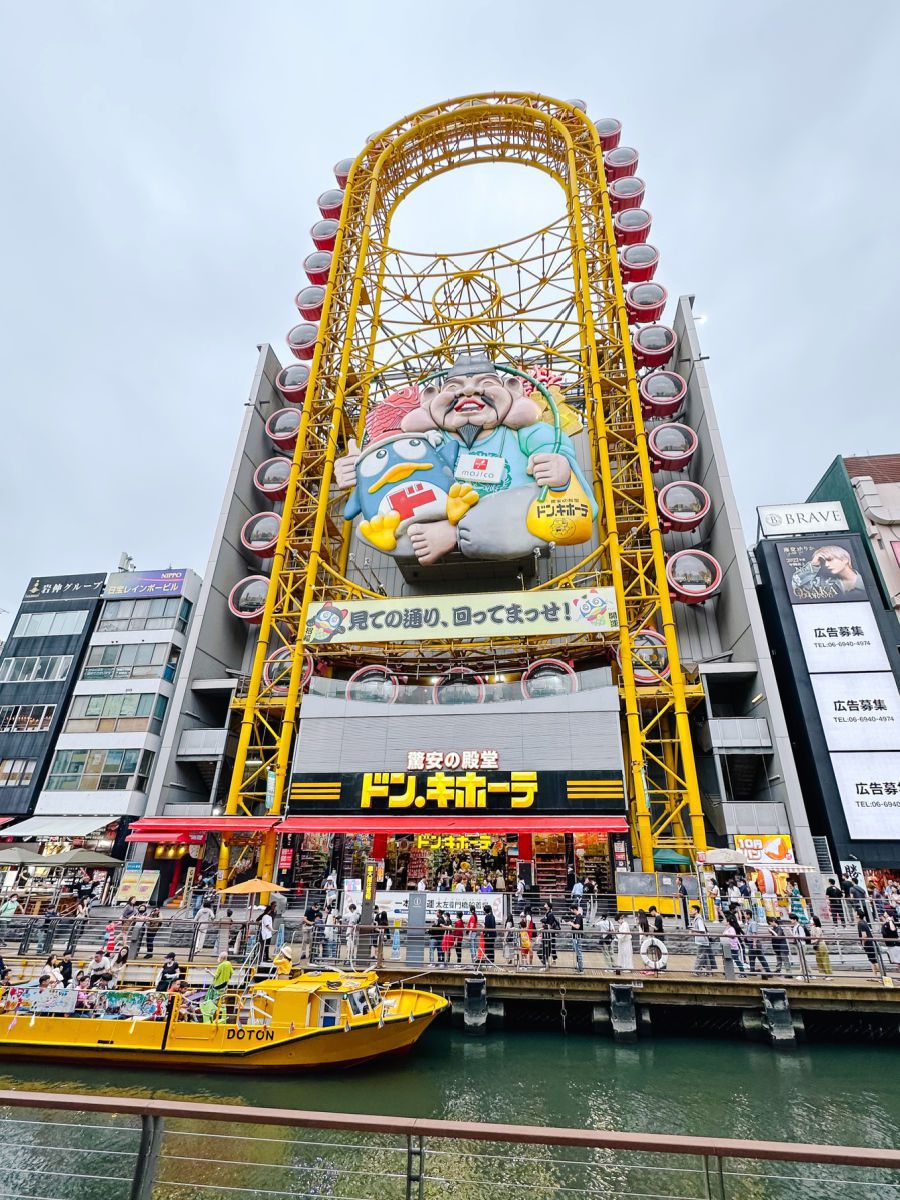
After leaving Shinsekai, head up to the main tourist district of Dotonbori (also spelled Dotombori). Dotonbori is one of the most popular districts in Osaka, renowned for its vibrant nightlife, colorful neon signs, and delicious street food. Located along the Dotonbori Canal, the area is a hub of entertainment, shopping, and dining, with iconic landmarks like the famous Glico Running Man neon sign and the Ebisu Tower Ferris Wheel.
Start off by taking a stroll along the canal and immersing yourself in the vibrant ambiance or take a canal boat cruise to view the sites from the water.
When it comes to food, Dotonbori is a food lover’s paradise. The streets are lined with countless eateries, food stalls, and restaurants. Takoyaki, the ubiquitous octopus balls, is a must-try snack if you didn’t get your fill in Shinsekai. Another local favorite is okonomiyaki, a savory pancake layered with ingredients like cabbage, meat, and seafood. You can also find sushi, ramen, kushikatsu (deep-fried skewers), along with many, many sweets.
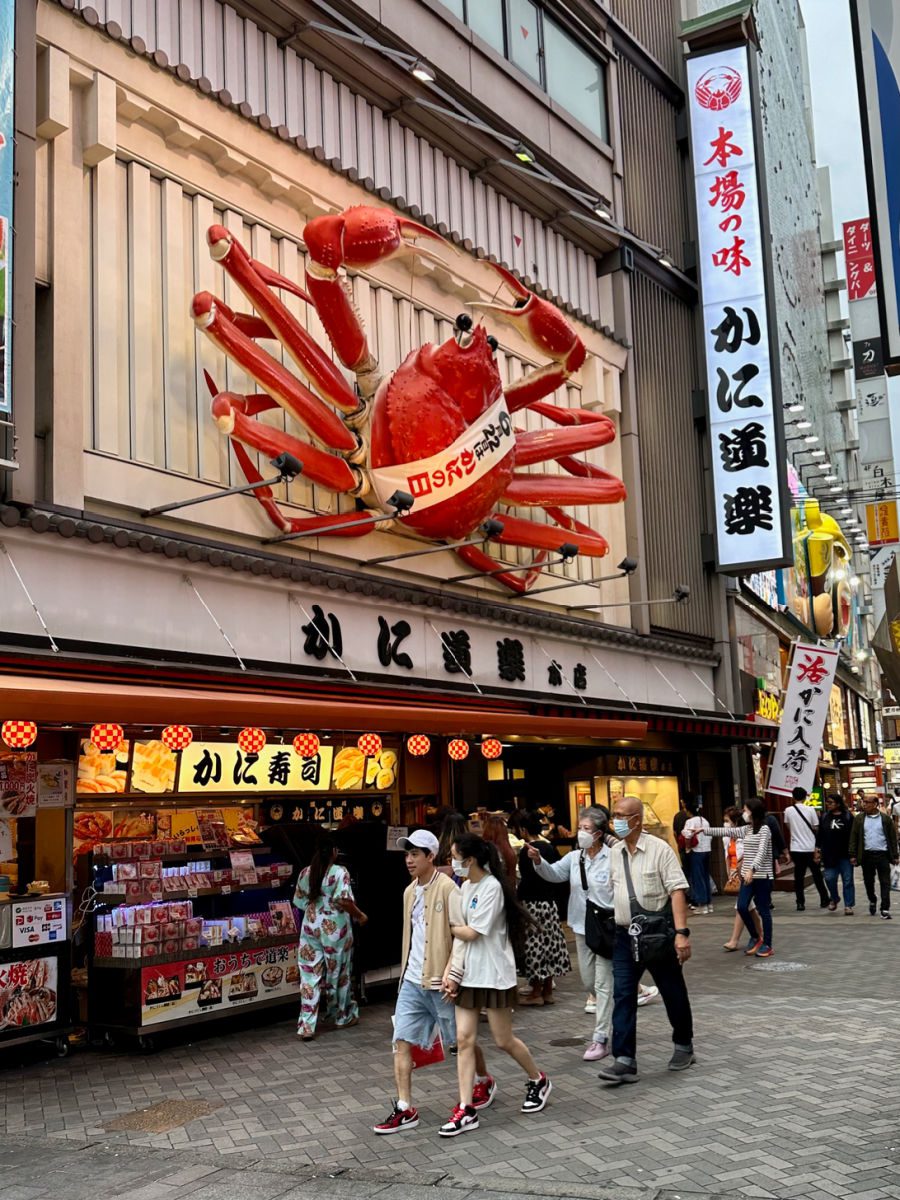
Personally, I fell in love with the melon pan bread ice cream sandwich, but you can also try the towering “long” soft ice cream cones, the 100 Yen pastries filled with cheese or other ingredients, and taiyaki or mochi with red bean paste. A few places to put on your list include:
- Grilled crab takeout from Kani Douraku
- Fried skewers from Kushikatsu Daruma (Angry Chef)
- Takoyaki (fried octopus balls) at Yama-Chan or Aizuya, the Michelin Guide-featured takoyaki shop, or Acchichi Honpo or Kukuru.
- Okonomiyaki (invented in Osaka) at Mizuno, Chibo Dotonbori, or, Hozenji Sampei, which offers a fluffy version. Try ordering it with yakisoba, which are fried buckwheat noodles that you can order on the bottom. We got ours at Mizuno but it pays to go early before the long line forms!
- Karaage fried chicken bites from Kin No Torikara
- Ramen from Kinryu Ramen Dotonbori or Kingemon Dotonbori
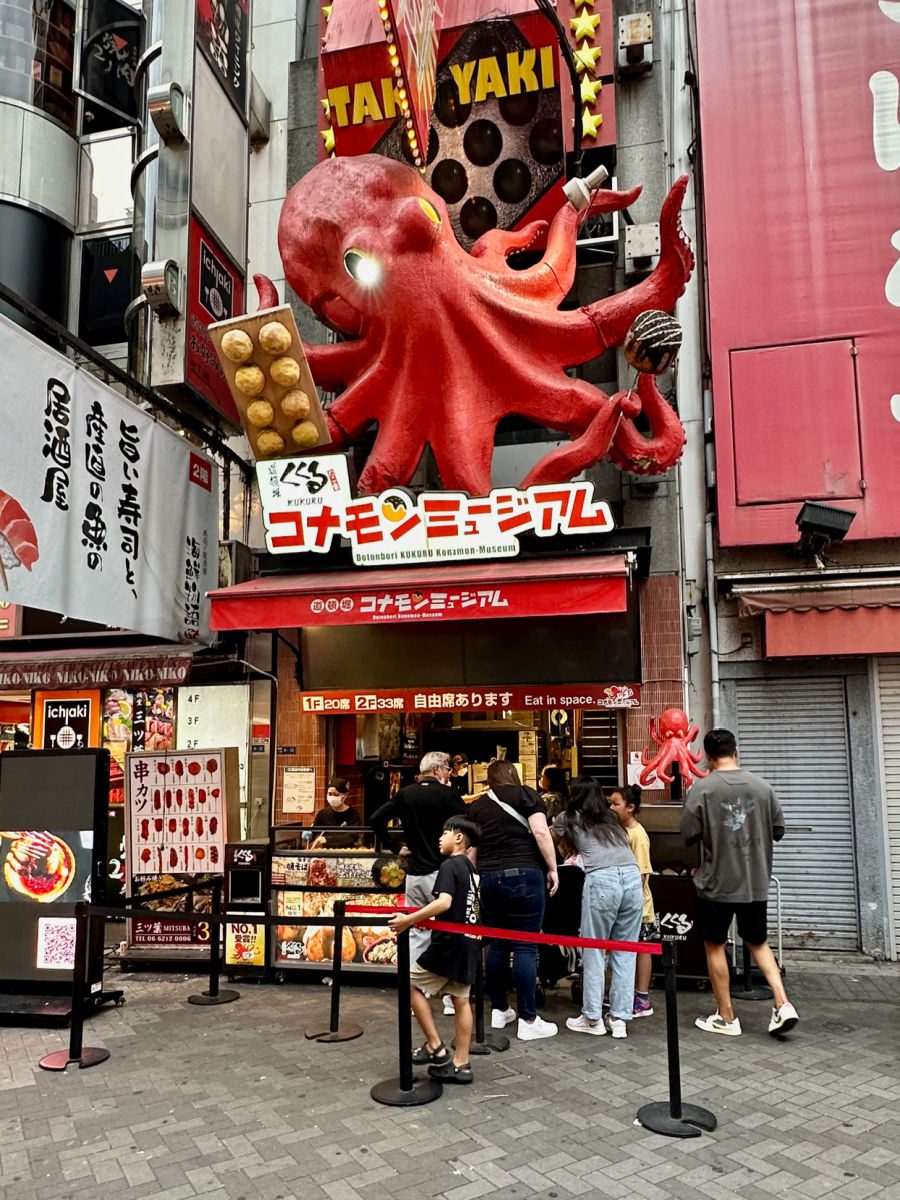
Beyond the food, Dotonbori offers a variety of shopping opportunities. The district is home to numerous department stores, trendy boutiques, and souvenir shops, where you can find everything from fashion items to local specialties to take home as souvenirs.
A few other places to see in the area include:
- Hozenji Yokocho, which is a narrow, atmospheric alley with well-preserved traditional architecture, stone-paved paths, and traditional lanterns that illuminate the area during the evening, creating a magical atmosphere. The highlight of Hozenji Yokocho is the Hozenji Temple, a small Buddhist temple that dates back over 1,400 years. The temple is famous for its moss-covered Fudo-Myo statue, which is believed to grant wishes. Visitors to the temple often partake in the ritual of splashing water onto the statue for good luck and cleansing purposes.
- Round1 Stadium, which features a variety of indoor sports and leisure facilities, including bowling alleys, arcade games, batting cages, billiards, darts, karaoke rooms, and much more. It has an extensive selection of arcade games from classic retro games to the latest virtual reality experiences.
- Amerikura, also known as “America-mura” or “Amemura,” is a vibrant neighborhood located in the Shinsaibashi district not far from Dotonbori. The name “Amerikura” stems from its association with American culture, as the area was originally influenced by American trends and fashion in the 1970s. Now it is known for its unique and alternative fashion scene, with numerous independent boutiques, vintage stores, and trendy clothing shops lining its streets. The area also has colorful and eye-catching street art, graffiti, and murals, adding to the artistic and edgy atmosphere. Aside from fashion, Amerikura offers a vibrant nightlife scene with an array of bars, clubs, and live music venues that come alive at night.
Osaka Itinerary: Day 3 (Day Trip to Hiroshima and Miyajima)
Osaka is under two hours from Hiroshima by Shinkansen and a visit to Hiroshima or Hiroshima and the neighboring island of Miyajima make for a great day trip and a good way to end your time in Osaka. You can explore these sites on your own, but I decided to book a full-day private tour with JGA (Japan Guide Agency) through Get Your Guide, and we loved our guide Eiji.
Eiji contacted me a few weeks before our visit to discuss and customize the itinerary to make sure we visited the sites we were most interested in, and in the order that I preferred. He met us at the exit of the train and was with us until we returned to the train station at the end of the day.
Hiroshima
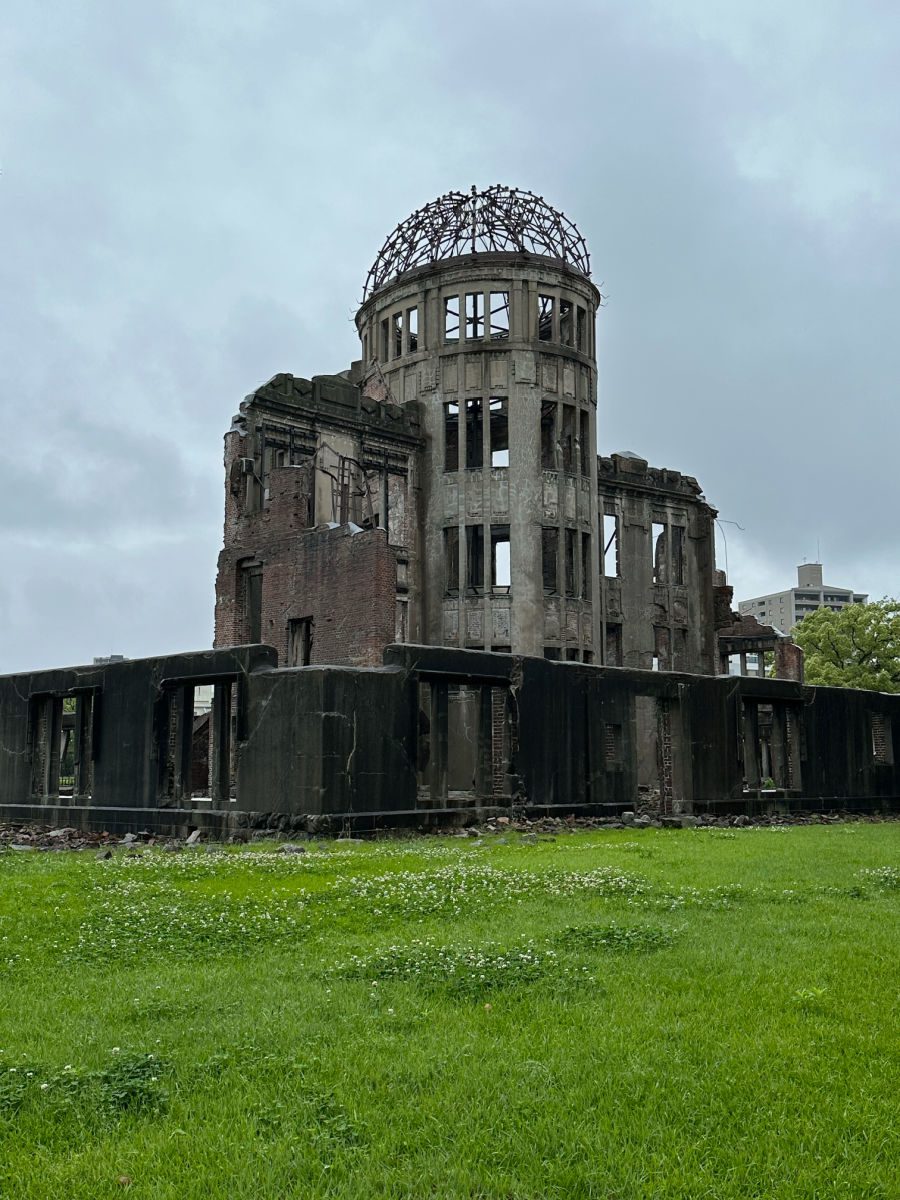
We started our visit with a quick bus ride to the hypocenter of the nuclear blast that killed approximately 140,000 local citizens at 8:15 a.m. on August 6, 1945. The bomb was dropped by the Americans to hasten the end of the war and carried by the American bomber aircraft, the Enola Gay. The attack on Hiroshima stands as a stark reminder of the devastating consequences of nuclear warfare, which is one of the reasons these sites were recently visited by the G7 world leaders.
From there, we walked over to the A-Bomb Dome, also known as the Hiroshima Peace Memorial. It is the remnants of the Industrial Promotion Hall, which was originally constructed in 1915 and became one of the few buildings left standing near the epicenter of the atomic bomb explosion. It has been preserved in its ruined state, with its skeletal framework and crumbling walls, to honor the memory of the lives lost and to convey the horrors of the atomic bombing.
Designated as a UNESCO World Heritage Site, the A-Bomb Dome holds great historical and cultural significance. It stands as a testament to the resilience and strength of the people of Hiroshima and serves as a solemn reminder of the importance of working towards a world free from nuclear weapons.
In the Peace Memorial Park, we also visited the Children’s Peace Monument. This monument is dedicated to the children who lost their lives due to the bombing and the long-lasting effects of radiation. It features a statue of Sadako Sasaki, a young girl who became a symbol of peace through her story of folding 1,000 origami cranes.
In addition, we walked past the Peace Memorial Cenotaph, which holds the names of all the known victims of the atomic bomb, and the eternal flame, which they vow to keep lit until nuclear weapons are eradicated.
Visiting this area raised so many questions, especially as an American, whose country was the perpetrator of this atrocity. Of course, the Japanese bombed Pearl Harbor to draw us into the war, but the devastation of civilians and an entire city with a single bomb is just horrific. It was hard to imagine that the Japanese wouldn’t hold some anger toward American visitors, but Eiji assured me that they see the Memorial and the Museum as a reminder of the horrors of war and the people are against war, not against the USA.
Our final stop in Hiroshima was a visit to the Peace Memorial Museum, which provides a comprehensive account of the atomic bomb attack and its devastating consequences. Its exhibits include artifacts, photographs, and personal stories, allowing you to gain a deeper understanding of the human impact of the bombing. It deals not just with the attack that day, but the long-term impacts on the people and the city.
It was heavy and a lot to take in, but an important part of history is to respect those killed and remind ourselves to not let this happen again. After a dark morning, it was a very pleasant change to spend the afternoon on Miyajima. I definitely recommend visiting Hiroshima first to end on a lighter note.
Miyajima
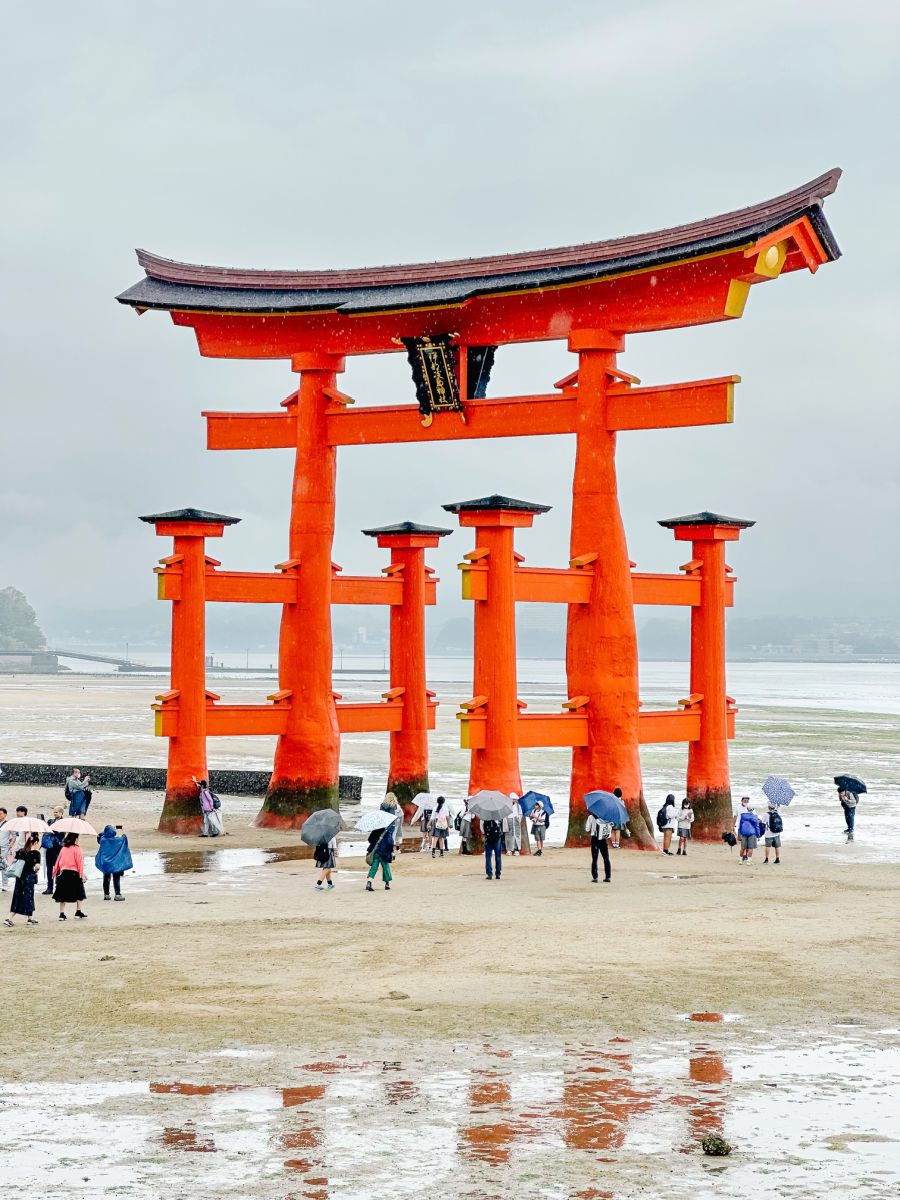
Miyajima, also known as Itsukushima Island, is a picturesque island located in Hiroshima Bay. It is famous for its iconic floating torii gate of Itsukushima Shrine. When we visited it was raining and the mist on the mountains gave the entire island a mystical quality, making it one of my favorite things that we did in Japan. The town streets, beautiful beach, mysterious mountains, and classic Japanese architecture make Miyajima feel quite magical.
To get to the island, you can either take a short ferry to the island from a ferry terminal, which is about 30 minutes from the train station by local train, or take a boat tour from the Peace Memorial Park directly to Miyajima, which takes about 45 minutes.
The main attraction is the Itsukushima Shrine, a UNESCO World Heritage Site. The shrine’s iconic red torii gate appears to be floating on the water during high tide, creating a mesmerizing sight. During low tide, you can go out on the beach and walk through the gate. The gate was put in the water because visitors from Hiroshima would visit the shrine by boat, and enter through the gate.
The shrine itself also offers beautiful architecture and I’d love to see it during the spring high tides when the water laps at the base of the platform walkways built around the buildings.
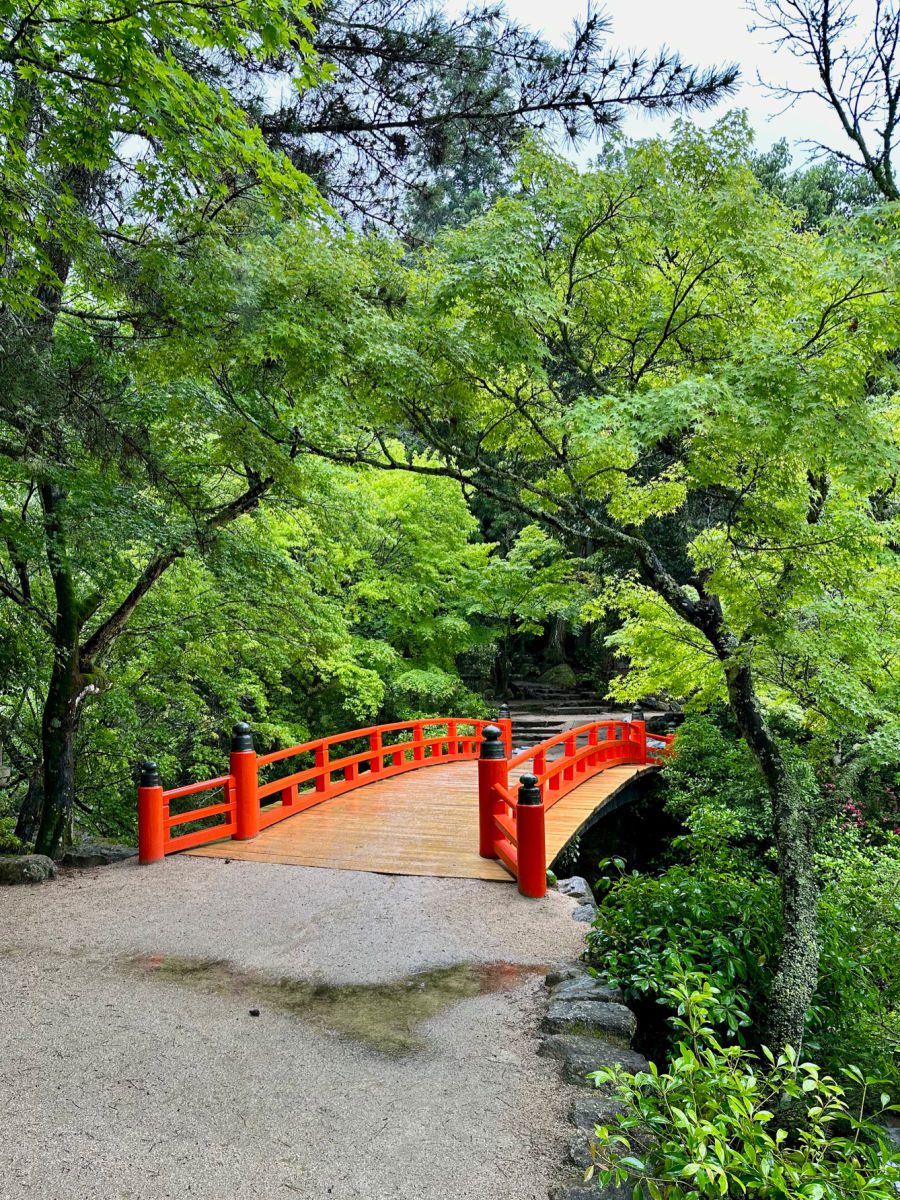
Another popular attraction is Momijidani Park, which is a scenic spot known for its beautiful maple trees, which are especially lovely during the autumn season. Throughout the island, you will also encounter wild deer. Unlike in Nara, you aren’t allowed to feed them, but the deer can still be aggressive if you have paper or food in your hands. One actually followed me into the visitor center and grabbed a brochure off of the counter and started eating it. The staff had to chase it outside and wrestle the paper away from the stubborn deer.
If you choose to spend a full day on Miyajima, you can also go to the top of Mount Misen, the island’s highest peak. There are various hiking trails, including a cable car option for those who prefer a less strenuous ascent. At the base of the mountain, you will find the Daisho-in Buddhist Temple, which is meant to be one of Japan’s most sacred temples.
You will want to leave time to walk along Omotesando Street, where you will find street food stalls and shops selling traditional crafts, souvenirs, and Miyajima’s famous wooden rice scoops known as “mokugyo” (we bought one to bring home.) Here you can try Hiroshima-style okonomiyaki and Hiroshima fresh oysters, straight from the oyster farms that you pass by on the ferry. These are fairly large oysters, which are grilled and served up either plain or Rockefeller style. If you are an oyster lover, don’t leave the island without giving them a try.

I really fell in love with Miyajima and it made me want to visit more of the smaller towns in the Japanese countryside on a future visit. If I returned to Miyajima, I’d also book a night in the traditional Ryokan and enjoy the island after the day trippers leave.
If you have more time…
If you have an extra day in Osaka, you may want to add in a visit to Universal Studios Japan or the TeamLab Botanical Garden.
I’d also hoped to visit the CupNoodles Museum Osaka Ikeda, which is a museum dedicated to instant noodles and Cup Noodles, as well as its creator and founder, Momofuku Ando. You can reserve a special ticket to design your own Cup of Noodles. Since it is 30 minutes outside of the city center, we didn’t have time to squeeze it into our Osaka itinerary.
Getting to Osaka
You can easily get to Osaka by train or plane. From major cities like Tokyo or Kyoto, you can board the Shinkansen and enjoy a comfortable and speedy ride to Osaka. Local trains are also an option, as it is only 30 minutes on a local train from Kyoto to Osaka versus 15 on the Shinkansen. Keep in mind that the Shinkansen bullet trains arrive and depart from the Shin-Osaka station, which is about a five-minute local train ride from the main Osaka Station. Just remember that on the Shinkansen bullet train you now need to make a reservation for luggage and those are limited so be sure to do so in advance or ship your luggage ahead.
If you are traveling directly to Osaka, Kansai International Airport, located on an artificial island in Osaka Bay, serves as the main gateway for air travel to the city. From Kansai International Airport, you can easily access the Osaka city center by taking a direct train or bus.
Another option is the Osaka International Airport, commonly known as Itami Airport. Itami Airport is located closer to the city center but primarily serves domestic flights within Japan. If you fly into Itami Airport, you can easily access Osaka’s downtown area via various transportation options, such as airport buses, taxis, or the Osaka Monorail.
Getting Around Osaka
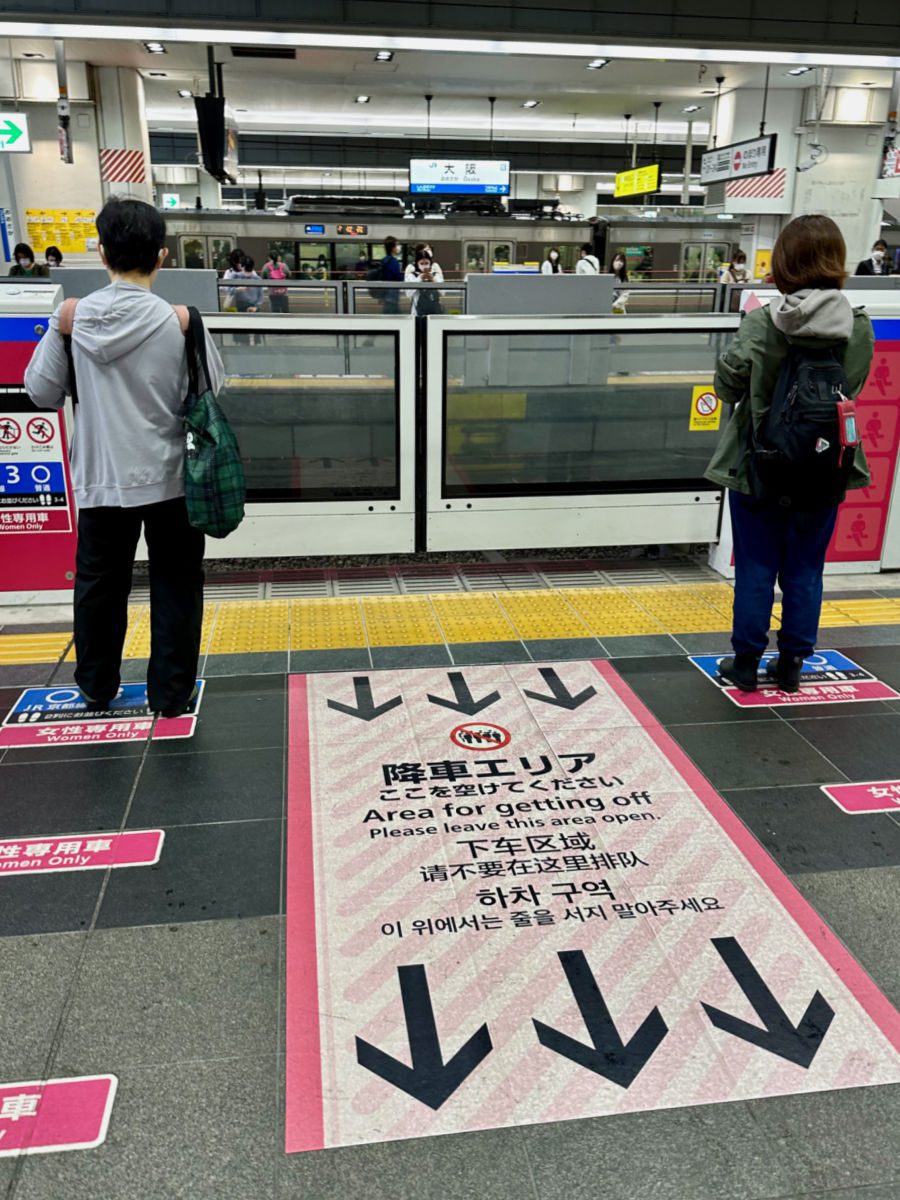
As a large, modern city, getting around Osaka is quite easy using the city’s efficient and extensive public transportation options. The Osaka Metro consists of multiple lines that connect various parts of the city, and, like in Tokyo, signs and announcements are in both Japanese and English. You can use your IC card (such as ICOCA or Suica) to seamlessly pay for fares on both the subway and buses.
Additionally, the JR West rail lines were very convenient to use to get to many parts of the city and surrounding areas from Osaka Station.
Where to Stay in Osaka
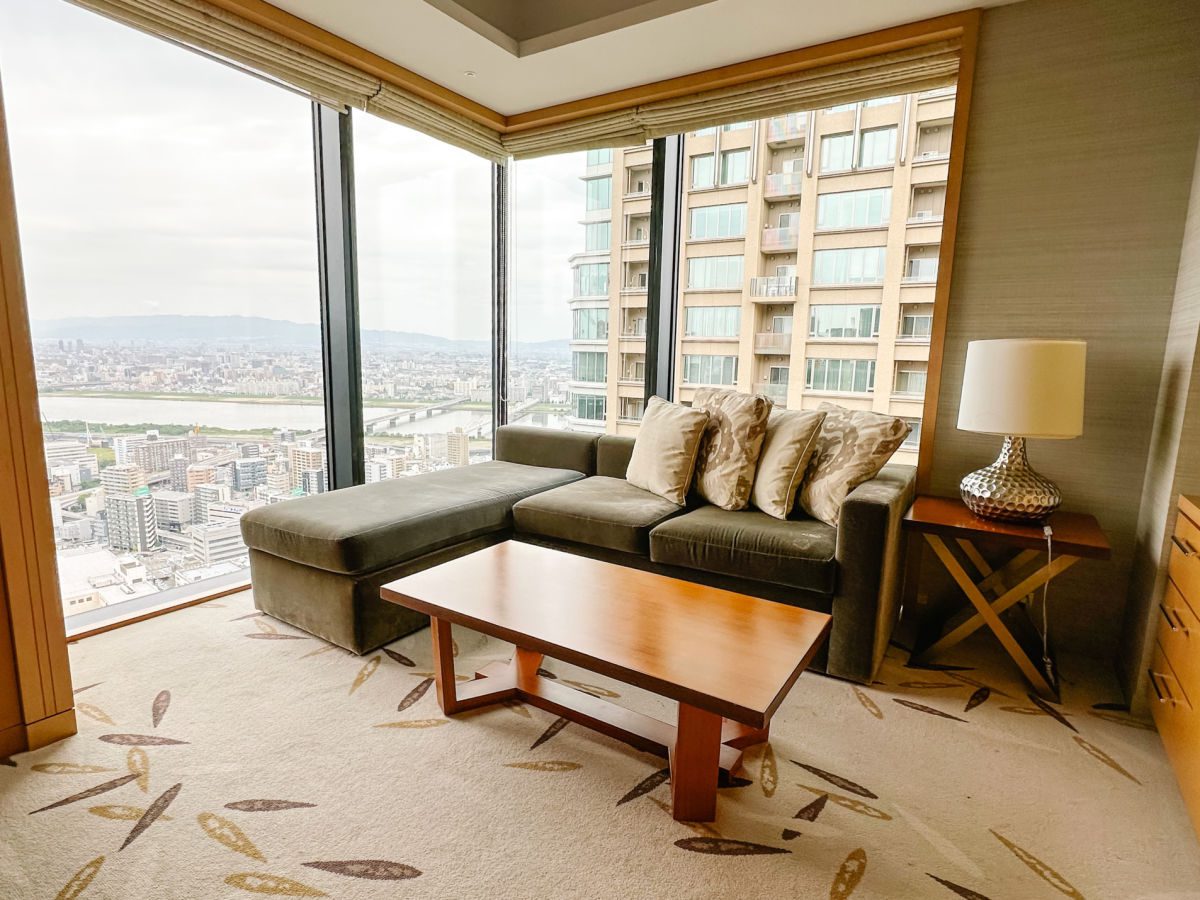
There are many options for what areas to stay in Osaka, including Namba and Umeda. I wanted to stay near a central transportation hub, in an area that offered plenty of restaurants and shops, but without being too touristy. We found the Umeda area around Osaka Station perfect for our needs and chose to stay at the Intercontinental Osaka and couldn’t have been happier.
To be honest, we all felt that the Intercontinental Osaka was the nicest city hotel that we have stayed at (beating out a few Four Seasons and Ritz-Carltons). The hotel is connected to the train station and shopping malls through a series of walkways. Upon arrival, you take the elevator to the beautiful lobby on the 20th floor, which is also where you will find the restaurants and stunning lobby bar. The indoor pool, spa, bathhouse, and fitness room are all on the fourth floor.
Since I booked through the American Express Fine Hotels program using my AmEx Platinum, we were given an early check-in at 12 pm, along with a $100 food and beverage credit and daily breakfast for two. Instead of booking two rooms as we had in other cities, I decided to spend just a tiny bit more to reserve one of the two-bedroom residences. It was a worthy investment as we all enjoyed spending time together in the living room, eating room service one night at our dining table, and utilizing the kitchen amenities, including the washer/dryer combo.
Most of all, we loved the spectacular views of the city and the river from the large windows! The only downside of booking the residence over two separate rooms is that since it was counted as one room, we only received breakfast for two. If we had booked two rooms, it would have been breakfast for two, per room, so all of us would have eaten for free. And let me tell you, the breakfast buffet was top-notch. There was everything from eggs to order to bao buns, featuring everything you would expect from a Western / European buffet and a Japanese breakfast.
I’d highly recommend the Intercontinental Osaka if it is within your budget, otherwise, there are many other choices:
VISITING JAPAN? READ MORE…
If you are planning a visit to Japan, be sure to also check out the following articles:
- How much does a trip to Japan cost?
- 75+ Japan travel tips
- 14-day Japan Itinerary
- 5 Days in Tokyo itinerary
- 5 Days in Kyoto itinerary
Save this to Pinterest
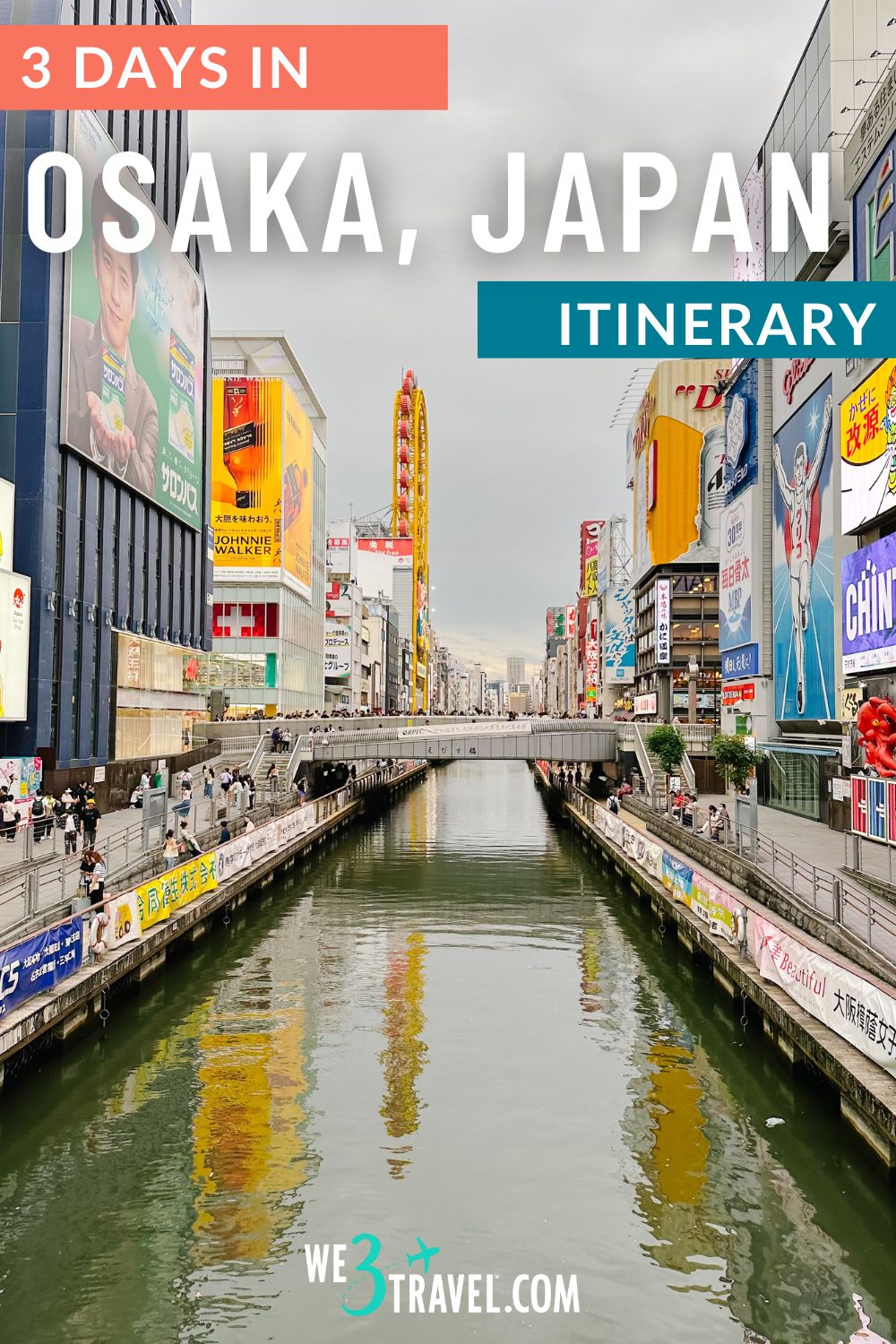

Tamara Gruber is the Founder and Publisher of We3Travel. A former marketing executive and travel advisor, Tamara is an award-winning travel writer and recognized expert in family travel. Tamara is a member of SATW, NATJA, IFWTWA, and the Adventure Travel Trade Association, and serves on the Board of the Family Travel Association. She is also the publisher of YourTimetoFly.com and the co-host of the Vacation Mavens travel podcast.


